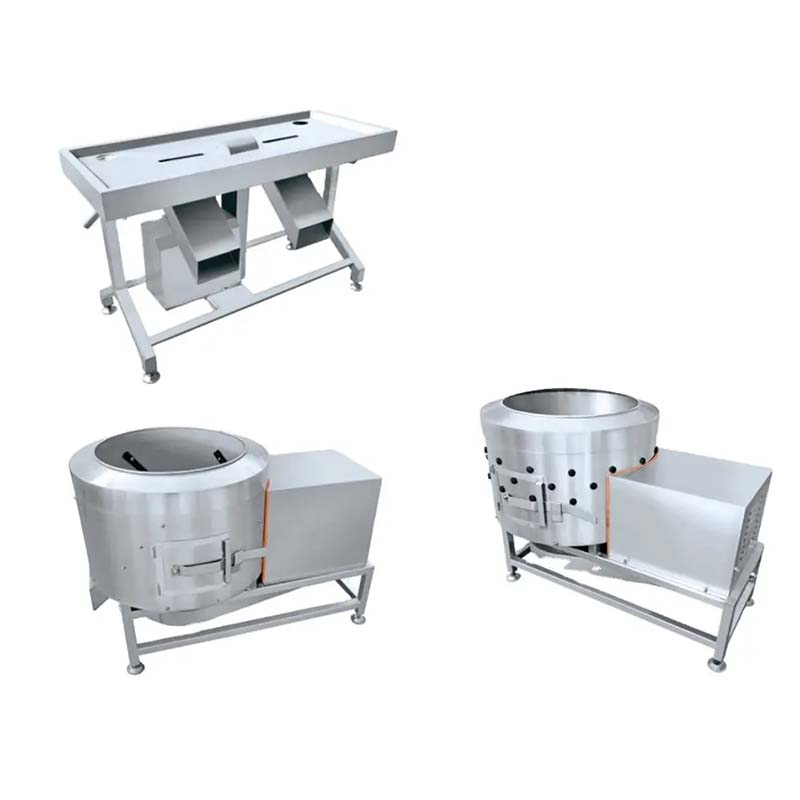Automatic Meat Processing Line for Efficient Slaughtering Operations
Desemba . 05, 2024 09:43 Back to list
Automatic Meat Processing Line for Efficient Slaughtering Operations
The Evolution and Impact of Automatic Slaughter Lines
The global food industry has seen significant advancements in technology over the last few decades. One of the most significant innovations in meat processing is the development of automatic slaughter lines. These lines utilize mechanized systems to streamline the slaughtering process, enhancing efficiency, and addressing various ethical and safety concerns associated with meat production. This article explores the evolution of automatic slaughter lines, their operational mechanisms, and their social and economic impacts.
Historical Context
Historically, meat slaughtering was labor-intensive and required extensive manual labor, which often resulted in inconsistencies in quality and safety standards. The advent of the Industrial Revolution in the 18th and 19th centuries marked the beginning of mechanized agriculture and animal husbandry, leading to the initial concepts of automated slaughtering. However, it wasn't until the late 20th century that fully automated slaughter lines began to emerge, fueled by advancements in technology and a growing demand for meat products.
How Automatic Slaughter Lines Work
Automatic slaughter lines integrate various technologies and machinery to facilitate the slaughtering process, which includes stages such as stunning, bleeding, evisceration, and processing.
1. Stunning The process usually begins with the humane stunning of animals to ensure they are unconscious before slaughter. Various methods, such as electrical stunning or captive bolt systems, are employed to minimize stress and pain.
2. Bleeding Once stunned, the animals are moved to the bleeding area, where they are hung vertically for the blood to drain effectively. Automated systems can monitor this stage to ensure it meets health and safety standards.
3. Evisceration The next step involves the removal of internal organs, also performed with automated tools that ensure precision and cleanliness. This stage is critical in preventing contamination, making the meat safe for consumption.
4. Processing and Packaging After the carcass is processed, it moves to the packaging stage, where automatic systems ensure that meat is packaged efficiently for distribution. Robotic systems can apply labels, seal packages, and store products in cold storage units.
Benefits of Automatic Slaughter Lines
automatic slaughter line

The advantages of automatic slaughter lines are multifaceted and impactful
1. Efficiency Automatic systems greatly increase the throughput of meat processing operations. By reducing the time spent on each stage of slaughter, businesses can produce more meat in a shorter timeframe.
2. Consistency and Quality Control Automation allows for standardized processes, which can reduce the risk of human error. This consistency is crucial in maintaining food safety standards and quality assurance.
3. Hygiene and Safety The use of machines minimizes direct human contact with animals and meat, significantly reducing the risk of contamination and improving overall hygiene in the processing environment.
4. Cost-Effectiveness Although the initial investment in automated systems can be high, the long-term operational savings—stemming from reduced labor costs and increased productivity—can be substantial.
Ethical Considerations
Despite the many advantages, automatic slaughter lines have raised ethical discussions regarding animal welfare. Critics argue that while automation may enhance efficiency, it might also lead to depersonalization in the treatment of animals. Ensuring that automated systems adhere to humane treatment standards is imperative for maintaining public trust in the meat industry.
The Future of Automatic Slaughter Lines
As technology continues to evolve, the future of automatic slaughter lines appears promising. Innovations such as artificial intelligence and machine learning could further enhance efficiency and animal welfare protocols. Moreover, increased consumer awareness regarding ethical meat production is pushing the industry toward more humane practices.
In conclusion, automatic slaughter lines have transformed the meat processing industry, introducing a new era of efficiency, safety, and consistency. As these technologies continue to advance, the industry must balance operational effectiveness with ethical considerations to ensure a sustainable future for meat production. It is essential for stakeholders, including consumers, producers, and policymakers, to engage in continued dialogue about the implications of automated slaughter processes, ensuring that animal welfare remains a priority in the quest for innovation.
-
High Performance Exhaust Fan – Efficient Ventilation Solutions for Home
NewsJun.10,2025
-
High-Quality Gestation Pen for Sows Durable Mobile Pig Pen & Simple Pig Pen Solutions
NewsJun.10,2025
-
High Quality Rabbit Cage Double Tier Designs & Welded Wire Mesh Supplier
NewsJun.10,2025
-
Floating Fish Feed Machine - High Efficiency Floating Fish Feed Extruder for Small Scale Production
NewsJun.10,2025
-
Premium Poultry Housing Solutions Mobile & Commercial Free Range Options
NewsJun.10,2025
-
Industrial FRP Fans Corrosion-Resistant Blades & Centrifugal Systems
NewsJun.09,2025






